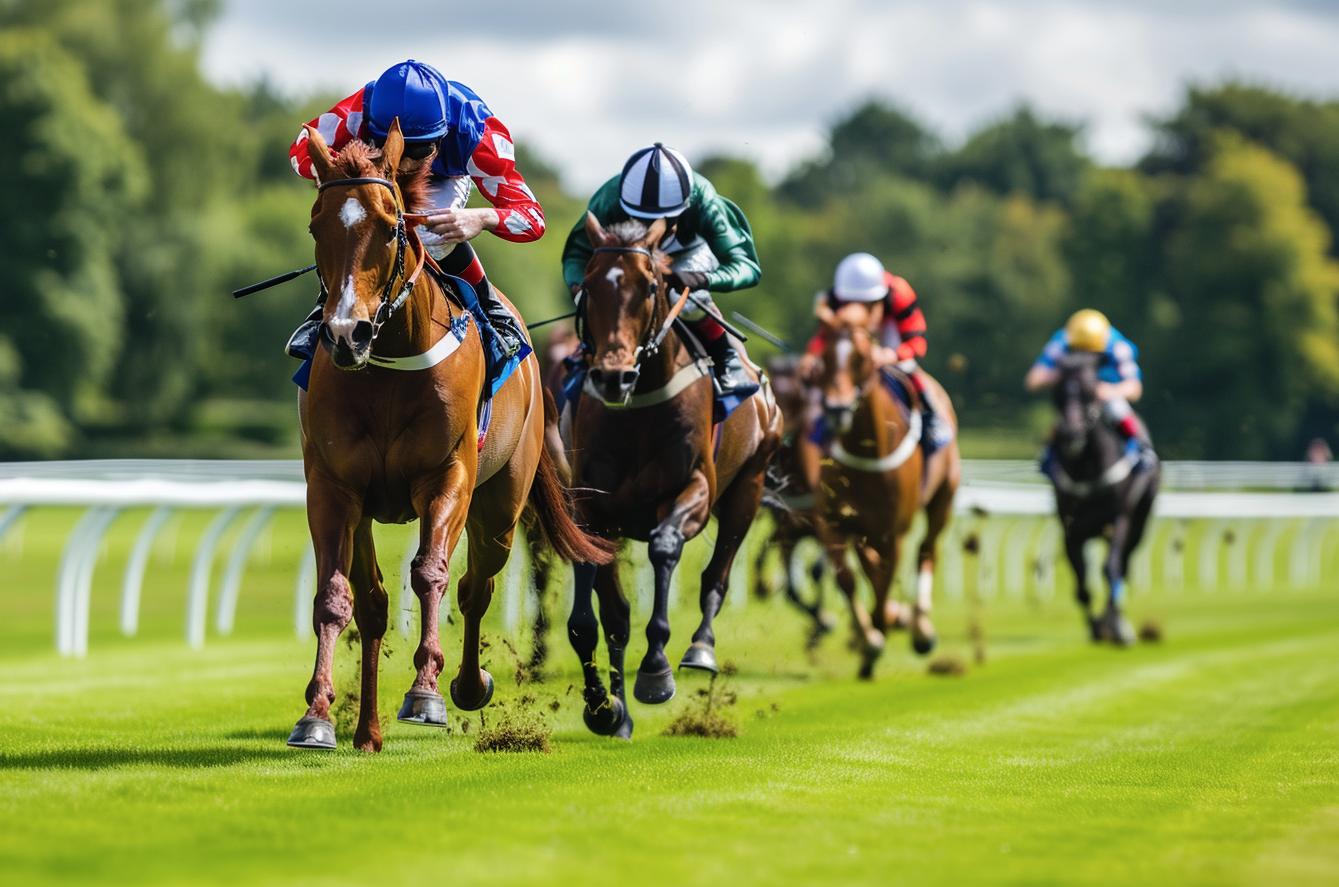Greyhound racing is a popular sport in the United Kingdom, with a long history dating back to the early 20th century. It is a form of racing where greyhounds, a breed of dog known for their speed and agility, chase a mechanical lure around a track. The sport is regulated by the Greyhound Board of Great Britain, which oversees the welfare of the dogs and the conduct of races.
Greyhound racing is enjoyed by many people in the UK, both as a spectator sport and as a form of betting. The industry uses a parimutuel betting tote system, which allows punters to place bets on the outcome of races. Attendances have declined in recent years, mainly due to the decrease in evening fixtures with the majority of fixtures being held in the daytime. However, there are still many dedicated fans of the sport who enjoy the excitement and thrill of watching these magnificent creatures compete.
If you are new to greyhound racing, it can be a bit overwhelming at first. There are many different terms and rules to learn, as well as strategies for placing bets. This guide aims to provide a comprehensive introduction to the sport, covering everything from the history of greyhound racing in the UK to the rules and regulations governing the sport today. Whether you are a seasoned gambler or simply curious about this fascinating sport, this guide will provide you with the knowledge you need to enjoy greyhound racing to the fullest.
History of Greyhound Racing in the UK
Greyhound racing is a popular sport in the UK, with a rich history that spans several centuries. In this section, we will explore the origins of greyhound racing in the UK, from early coursing and forest laws to the modern-day sport enjoyed by millions.
Early Coursing and Forest Laws
The sport of greyhound coursing can be traced back to the Middle Ages, when it was a popular pastime among the nobility. However, it wasn’t until the reign of King Canute in the 11th century that the sport began to take shape. Canute introduced forest laws that made it illegal for commoners to hunt with dogs, which led to the development of coursing as a sport for the nobility.
Sport of Queens and the Influence of Noblemen
Greyhound coursing continued to be a popular sport among the nobility throughout the centuries, with Queen Elizabeth I being a notable enthusiast. However, it wasn’t until the early 1900s that the sport began to gain popularity among the wider public. Enclosed courses were built, and the first greyhound racing association was formed in 1926.
Transition to Modern Greyhound Racing
The sport of greyhound racing quickly became a staple of the UK’s sporting scene, with tracks opening up across the country. The White City Stadium in London and Suffolk Downs in Boston were among the first to host greyhound races. The sport continued to evolve, with the introduction of mechanical hares and other innovations.
Overall, the history of greyhound racing in the UK is a fascinating one, with a rich heritage that continues to be celebrated today. Whether you are a seasoned fan or a newcomer to the sport, there is always something new to discover and enjoy.
Understanding Greyhound Racing
If you’re new to greyhound racing, it can be a bit overwhelming. However, with a basic understanding of the sport, you’ll be able to enjoy the excitement and potentially make some money betting on the races. In this section, we’ll cover the basics of greyhound racing, including the greyhound itself, racing formats, the racing manager and vet.
The Greyhound
Greyhounds are a breed of dog that have been bred for their speed and agility. They are typically used for racing, and their lean and muscular build allows them to reach speeds of up to 45 miles per hour. Greyhounds used for racing are usually between 1 and 4 years old, with younger dogs known as puppies.
Racing Formats
There are several different types of greyhound races, including hurdle races, sprint races, and marathon races. Races can also be run over different distances, with the most common distances being 380-500 metres. The races are run on an oval track, with an artificial lure used to keep the dogs focused on the race.
The Racing Manager and Vet
The racing manager is responsible for ensuring that each race runs smoothly. They are responsible for grading the greyhounds based on their past performance, and assigning them to starting traps. The vet is responsible for ensuring that each greyhound is healthy and fit to race.
Starting Traps
At the start of each race, the greyhounds are placed into starting traps. These traps are assigned by the racing manager, giving each greyhound an equal chance of breaking on terms. The traps are numbered and coloured, with the red trap being closest to the rail, followed by blue, white, black, orange, and finally, green.
Grades
Greyhounds are graded based on their past performance, with the grades ranging from A1 to A10. The higher the grade, the better the greyhound’s past performance. Each grade has a minimum and maximum time that the greyhound must run the race in to remain in that grade.
Racecards
Racecards provide all the information you need to know about each race, including the names of the greyhounds, their ages, their finishing positions in previous races, and their odds of winning. They also provide information on the race itself, including the distance, the number of laps, and the prize money.
In conclusion, greyhound racing is an exciting sport that is enjoyed by many people in the United Kingdom. With a basic understanding of the greyhound, racing formats, the racing manager and vet, starting traps, grades, and racecards, you’ll be able to enjoy the races and potentially make some money betting on the outcomes.
Major Greyhound Racing Stadiums and Events
Greyhound racing is a popular spectator sport in the United Kingdom, with many stadiums hosting regular events throughout the year. Here are some of the major greyhound racing stadiums and events in the UK:
Belle Vue Stadium
Belle Vue Stadium is one of the oldest greyhound racing stadiums in the UK, located in Manchester. The stadium can accommodate up to 4,000 spectators and hosts regular events, including the Belle Vue Puppy Derby and the Laurels. Belle Vue Stadium is also home to the Northern Sprint, which offers a prize money of £8,000 to the winner.
English Greyhound Derby
The English Greyhound Derby is one of the most prestigious greyhound racing events in the world, held annually at different stadiums across the UK. The event offers a prize money of £175,000 to the winner, making it one of the richest greyhound racing events in the world. The English Greyhound Derby has been held at Towcester and Nottingham in recent years.
Towcester
Towcester is a popular greyhound racing stadium located in Northamptonshire. The stadium hosts regular events, including the prestigious English Greyhound Derby. Towcester is also home to the Greyhound Board of Great Britain, which is responsible for regulating and promoting greyhound racing in the UK.
Nottingham
Nottingham is another popular greyhound racing stadium in the UK, located in the East Midlands. The stadium hosts regular events, including the Select Stakes, which is one of the best meets in English racing. Nottingham is also home to the National Greyhound Racing Club, which is responsible for maintaining the integrity of greyhound racing in the UK.
Overall, greyhound racing is an exciting and popular sport in the UK, with many stadiums hosting regular events throughout the year. Whether you’re a seasoned fan or a newcomer to the sport, there’s sure to be a greyhound racing event near you that you can enjoy.
Betting on Greyhound Races
Greyhound racing is a popular sport in the UK, and betting on these races is a great way to add some excitement to the experience. In this section, we will discuss some important aspects of betting on greyhound races.
Understanding the Odds
Before placing a bet on a greyhound race, it is important to understand the odds. Odds represent the probability of a particular outcome occurring. For example, if a greyhound has odds of 2/1, it means that the bookmaker believes there is a 33.3% chance of that greyhound winning the race.
There are different ways of representing odds, including fractional, decimal, and American. Fractional odds are the most common in the UK, and are represented as a fraction such as 2/1 or 5/2. Decimal odds are represented as a decimal such as 3.00 or 2.50, and American odds are represented as a positive or negative number such as +200 or -150.
Choosing a Sportsbook
When choosing a sportsbook to place your bets, there are several factors to consider. Firstly, make sure the sportsbook is licensed and regulated by the UK Gambling Commission. This ensures that the sportsbook operates in a fair and transparent manner.
Another important factor to consider is the range of betting markets offered. Look for a sportsbook that offers a variety of betting options, including win, place, and each-way bets. Additionally, consider the quality of the odds offered by the sportsbook. Look for a sportsbook that offers competitive odds that give you the best chance of winning.
Lastly, consider the sportsbook’s reputation and customer service. Look for a sportsbook that has a good reputation for paying out winnings promptly and providing excellent customer service.
In summary, understanding the odds and choosing a reputable sportsbook are crucial when betting on greyhound races. By following these tips, you can increase your chances of making a profit while enjoying the excitement of greyhound racing.
Greyhound Racing Statistics
Greyhound racing is a popular sport in the United Kingdom with a long history. The National Greyhound Racing Club (NGRC) was founded in 1928 to regulate the sport and it remained the governing body until 2009 when it was replaced by the Greyhound Board of Great Britain (GBGB). Here are some key statistics related to greyhound racing in the UK:
- According to GREY2K USA Worldwide, between 2017 and 2021, there were 22,767 documented greyhound injuries in the UK, including 1,026 track fatalities. Additionally, 2,486 greyhounds were reported destroyed for other reasons such as treatment costs or being designated as unsuitable for adoption.
- As of September 2022, there are 20 licensed stadiums in the UK (excluding Northern Ireland) and two independent stadiums (unaffiliated to a governing body), according to Wikipedia.
- Attendances peaked in 1946 at around 70 million and totalisator turnover reaching £196,431,430, according to Wikipedia.
- The GBGB publishes various statistics related to greyhound racing on its website. For example, in 2020, there were 4,012 race meetings held across the UK, with 150,727 individual greyhounds taking part in races. The total prize money awarded was £32,013,313. You can find more detailed statistics on the GBGB website.
- The GBGB also publishes statistics related to the welfare of greyhounds. For example, in 2020, there were 3,246 welfare assessments carried out on greyhounds by independent assessors. Of these, 95.1% were deemed to be in good or excellent condition.
In summary, greyhound racing is a popular sport in the UK with a long history. While there have been concerns about the welfare of greyhounds, the GBGB has taken steps to improve their welfare and publishes regular statistics related to it.
Greyhound Racing in Europe
Greyhound racing is a popular sport in Europe, with many countries hosting their own tracks and events. The sport made its way to the continent through countries like the United States, the United Kingdom, Australia, and Ireland. Today, there are several greyhound racing tracks in Europe, including in countries such as Spain, Italy, Germany, and France.
In England, greyhound racing is a well-established sport, with the first modern greyhound race taking place in 1926 at Belle Vue Greyhound Stadium. The industry uses a parimutuel betting tote system, with on-course and off-course betting available. Attendances have declined in recent years, mainly due to the decrease in evening fixtures with the majority of fixtures being held in the daytime.
Greyhound racing in Europe has undergone significant changes in recent years, with animal welfare concerns leading to the closure of several tracks. In 2018, the Irish government announced plans to phase out the sport by 2026, citing concerns over animal welfare and declining attendance.
Despite these challenges, greyhound racing remains a popular sport in many parts of Europe. Fans of the sport can enjoy a range of events, from local races to international competitions. With a rich history and a dedicated following, greyhound racing is sure to remain a fixture of the European sporting scene for years to come.
Frequently Asked Questions
Is greyhound racing still legal in the UK?
Yes, greyhound racing is still legal in the UK. However, the sport has declined in popularity over the years, and the number of tracks has reduced significantly.
What are the grades of greyhound racing in the UK?
Greyhound racing in the UK is classified into different grades based on the dog’s past performance. The grades range from A1 to A11, with A1 being the highest grade.
What is the best Greyhound track in the UK?
There are several greyhound tracks in the UK, and each has its unique features. However, the Belle Vue Stadium in Manchester is considered one of the best tracks in the UK.
How do I start greyhound racing?
To start greyhound racing in the UK, you need to first become a member of a greyhound racing club. You can then buy or lease a greyhound and register it with the National Greyhound Racing Club.
How many greyhound tracks are there in the UK?
As of 2023, there are approximately 20 greyhound tracks in the UK. However, this number has declined significantly over the past few decades.
Where can I find information about greyhound racing in the UK?
You can find information about greyhound racing in the UK from various sources, including the Greyhound Board of Great Britain and the National Greyhound Racing Club. Additionally, many individual tracks have their websites where you can find information about upcoming races and events.






I used to read ‘The Sporting Life’ paper back in the 70s when I worked as a kennel lad.
I’m now disabled so spend all my spare time sitting on the sofa watching the horse and greyhound racing on the TV.
I buy the SUN newspaper and unfortunately apart from telling me the runners at the various greyhound tracks it tells me nothing about the individual dogs whether early pace, up or downgraded so I can’t work out my betting.
Does anyone out there know if there is a daily paper I can buy or a website where I can get get the details of the greyhound races on any particular day? Many thanks.